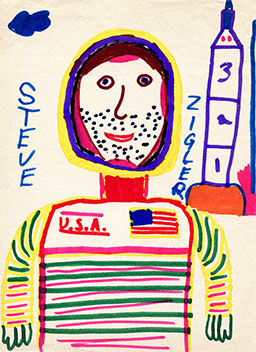
Experience. Share. Repeat.
More about the scientist...

I remember watching the Apollo astronauts on TV and reading about their missions to the moon in the newspaper. OK, I just dated myself. Back in those days, I dreamed that someday I would be an astronaut. Ummm…that didn’t happen. But, that interest spilled over into science, and one day I found myself in the middle of a chemistry Ph.D. program. It didn’t seem intentional at the time, but I remember the day I realized that, by becoming a scientist, I was fulfilling my dreams that started with my obsession with astronauts.
As I neared the end of graduate school, I decided I wanted to do something different with my Ph.D. Most Ph.D.s become professors at universities or scientists doing research for companies. Not that there is anything wrong with either of those noble pursuits and, of course, there is a long list of people with satisfying careers in both arenas. But I wanted to go in a different direction. I ended up working at a community hospital that was implementing a new diagnostic imaging technology known as positron emission tomography, or PET scanning. PET scans are possible through the use of radioactive tracers that emit small quantities of anti-matter, or positrons. When I had the opportunity to work in a field that uses anti-matter, which you may recognize as the fuel for warp engines in Star Trek, well, I had to jump on that! Not to mention that PET scans provide doctors and patients with diagnostic information that is not possible with other forms of imaging. I won’t go into the details, but suffice it to say that PET scans form an image based on biological processes in the body instead of anatomy, which is the basis for most other diagnostic imaging techniques. You can Google it to learn more.
For many years I’ve been active on committees for professional and standards-setting organizations pertinent to PET scanning. It is very rewarding work, but it is also challenging to be involved in a new paradigm that requires major changes associated with the adoption of new medical technologies. It has required some very creative solutions, so I’ve had a chance to exercise my creative muscles in my professional life as well!
More about the Photographer
More about the Creative Person
More about the Artist



